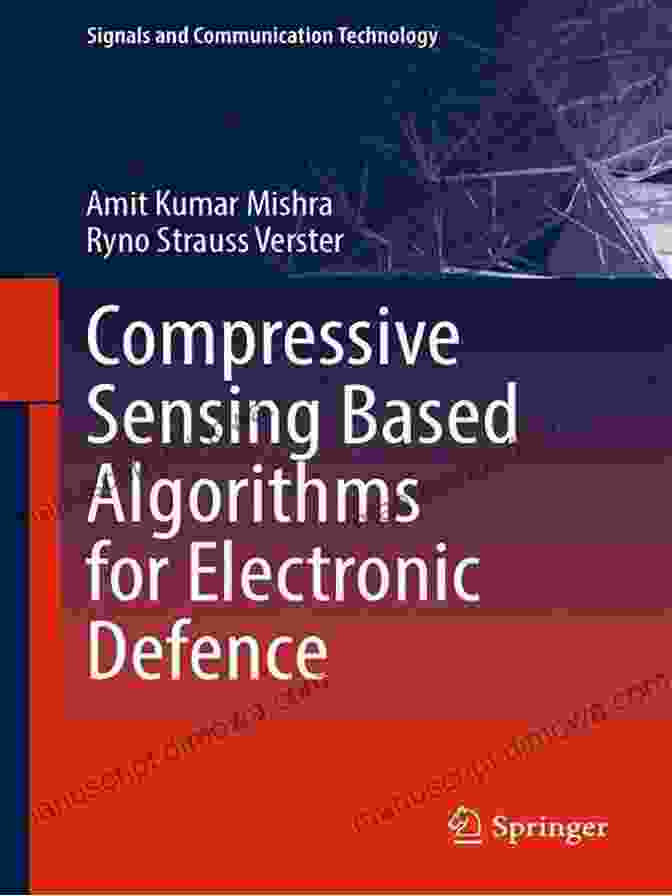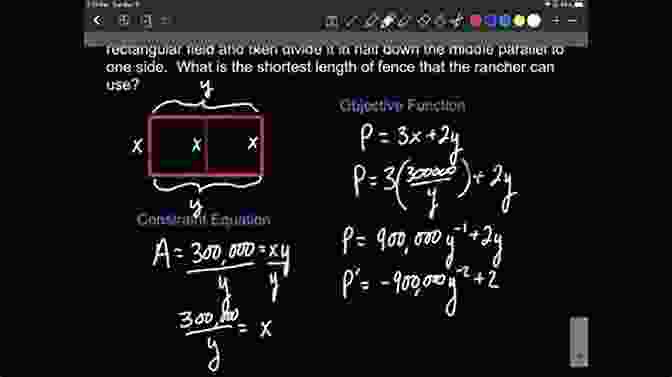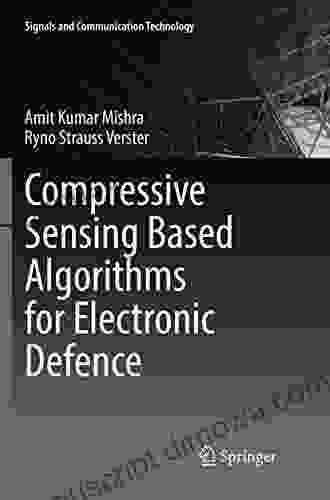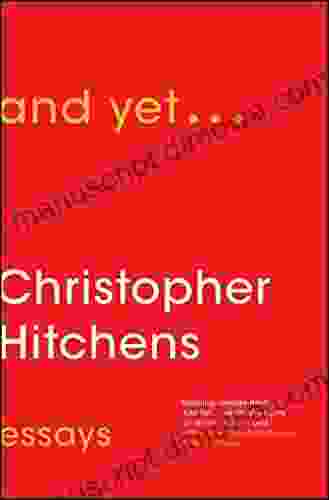Compressive Sensing Based Algorithms For Electronic Defence Signals And: Unlocking Advanced Signal Processing Techniques

5 out of 5
| Language | : | English |
| File size | : | 8726 KB |
| Text-to-Speech | : | Enabled |
| Screen Reader | : | Supported |
| Enhanced typesetting | : | Enabled |
| Print length | : | 277 pages |
In the realm of electronic defence, the ability to accurately detect, classify, and localize electronic signals is paramount. Compressive sensing (CS) has emerged as a revolutionary signal processing technique that empowers electronic defence systems with unprecedented capabilities. This article provides a comprehensive overview of CS-based algorithms for electronic defence signals, exploring their theoretical foundations, practical applications, and cutting-edge research directions.
Theoretical Foundations
CS is a signal reconstruction technique that exploits the inherent sparsity of signals. It relies on the principle that a sparse signal can be accurately reconstructed from a small number of non-adaptive linear measurements. This is achieved through random projections, which transform the signal into a compressed domain where the sparse structure is accentuated.
Formally, a signal \mathbf{x} of length N is considered sparse if it has only K non-zero elements, where K . CS aims to reconstruct \mathbf{x} from M measurements obtained through a sensing matrix A, where M . The compressed measurements \mathbf{y} can be expressed as:

Reconstruction involves solving the following optimization problem:

where ||\cdot||_1 denotes the \ell_1 norm.
Applications in Electronic Defence
CS-based algorithms have found widespread applications in electronic defence, including:
- Radar signal detection: CS can detect weak radar signals amidst noise by exploiting their sparse nature in the time-frequency domain.
- Signal classification: By capturing the unique sparsity patterns of different signal types, CS algorithms can effectively classify electronic signals, such as radar, sonar, and communication signals.
- Target localization: CS enables accurate localization of electronic signal sources by exploiting the spatial sparsity of the target's signature in the sensor array domain.
Cutting-Edge Research
Ongoing research in CS-based algorithms for electronic defence signals focuses on:
- Robust reconstruction algorithms: Developing algorithms that can handle noisy and incomplete measurements, ensuring reliable signal recovery in challenging environments.
- Adaptive sensing schemes: Designing adaptive sensing matrices that can optimize the measurement process based on the signal characteristics, improving reconstruction accuracy and efficiency.
- Compressed sensing for cognitive electronic warfare: Exploring the integration of CS with cognitive electronic warfare techniques to enhance situational awareness and decision-making in complex electromagnetic environments.
Compressive sensing-based algorithms have revolutionized electronic defence signal processing, providing unparalleled capabilities for signal detection, classification, and localization. These algorithms exploit the sparse nature of electronic signals, enabling efficient and robust signal recovery from a reduced number of measurements. Ongoing research in this field promises even more advanced algorithms that will further enhance the performance of electronic defence systems.
References
- E. J. Candès and M. B. Wakin, "An to compressive sampling," IEEE Signal Processing Magazine, vol. 25, no. 2, pp. 21-30, Mar. 2008.
- D. L. Donoho, "Compressed sensing," IEEE Transactions on Information Theory, vol. 52, no. 4, pp. 1289-1306, Apr. 2006.
- A. M. Bruckstein, D. L. Donoho, and M. Elad, "From sparse solutions of systems of equations to sparse modeling of signals and images," SIAM Review, vol. 51, no. 3, pp. 443-474, 2009.
5 out of 5
| Language | : | English |
| File size | : | 8726 KB |
| Text-to-Speech | : | Enabled |
| Screen Reader | : | Supported |
| Enhanced typesetting | : | Enabled |
| Print length | : | 277 pages |
Do you want to contribute by writing guest posts on this blog?
Please contact us and send us a resume of previous articles that you have written.
 Book
Book Novel
Novel Page
Page Chapter
Chapter Text
Text Story
Story Genre
Genre Reader
Reader Library
Library Paperback
Paperback E-book
E-book Magazine
Magazine Newspaper
Newspaper Paragraph
Paragraph Sentence
Sentence Bookmark
Bookmark Shelf
Shelf Glossary
Glossary Bibliography
Bibliography Foreword
Foreword Preface
Preface Synopsis
Synopsis Annotation
Annotation Footnote
Footnote Manuscript
Manuscript Scroll
Scroll Codex
Codex Tome
Tome Bestseller
Bestseller Classics
Classics Library card
Library card Narrative
Narrative Biography
Biography Autobiography
Autobiography Memoir
Memoir Reference
Reference Encyclopedia
Encyclopedia Chris Denove
Chris Denove Janusz Szuber
Janusz Szuber Christopher Dewdney
Christopher Dewdney Tim Grollimund
Tim Grollimund Michelle Lynn
Michelle Lynn Christian Jannasch
Christian Jannasch Chris Melson
Chris Melson Paul Mcgregor
Paul Mcgregor Chris Brady
Chris Brady Christine Pauls
Christine Pauls Chris Snyder
Chris Snyder Yongzhao Hua
Yongzhao Hua Kimberly Marcus
Kimberly Marcus Chris Murray
Chris Murray Richard Bronson
Richard Bronson Ronald Ritter
Ronald Ritter David Clay Large
David Clay Large Dean Murray
Dean Murray Reza Soudagar
Reza Soudagar Robert Shapiro
Robert Shapiro
Light bulbAdvertise smarter! Our strategic ad space ensures maximum exposure. Reserve your spot today!

 Andres CarterEmbark on a Journey Through the Ages: Explore the Church in the Middle Ages...
Andres CarterEmbark on a Journey Through the Ages: Explore the Church in the Middle Ages...
 Fletcher MitchellImmerse Yourself in the Enchanting World of Kat Incorrigible by Stephanie...
Fletcher MitchellImmerse Yourself in the Enchanting World of Kat Incorrigible by Stephanie...
 Edwin BlairThe Lawyer's Ultimate Guide to Online Leads: Empowering Your Firm for Success...
Edwin BlairThe Lawyer's Ultimate Guide to Online Leads: Empowering Your Firm for Success... Johnny TurnerFollow ·19.3k
Johnny TurnerFollow ·19.3k Hugh BellFollow ·18.8k
Hugh BellFollow ·18.8k Jeremy CookFollow ·7.9k
Jeremy CookFollow ·7.9k Eddie PowellFollow ·2.7k
Eddie PowellFollow ·2.7k Jeffrey HayesFollow ·11.2k
Jeffrey HayesFollow ·11.2k Harry CookFollow ·8.3k
Harry CookFollow ·8.3k Dean CoxFollow ·12.8k
Dean CoxFollow ·12.8k Timothy WardFollow ·10.2k
Timothy WardFollow ·10.2k

 Frank Mitchell
Frank MitchellStep Onto the Dance Floor of Spanish Fluency with...
Are you ready to take a...

 Jarrett Blair
Jarrett BlairEscape into the Enchanting Realm of "The British Empire...
Embark on an Extraordinary Literary Journey...

 Gregory Woods
Gregory WoodsHitler Olympics: The 1936 Berlin Olympic Games
The 1936 Berlin Olympic Games...

 Philip Bell
Philip BellThe British Empire of Magic and the Dark Knights King: An...
In the tapestry of literary...

 Jacob Hayes
Jacob HayesPerilous Journey of Danger and Mayhem: A Thrilling...
In the untamed wilderness,...
5 out of 5
| Language | : | English |
| File size | : | 8726 KB |
| Text-to-Speech | : | Enabled |
| Screen Reader | : | Supported |
| Enhanced typesetting | : | Enabled |
| Print length | : | 277 pages |








